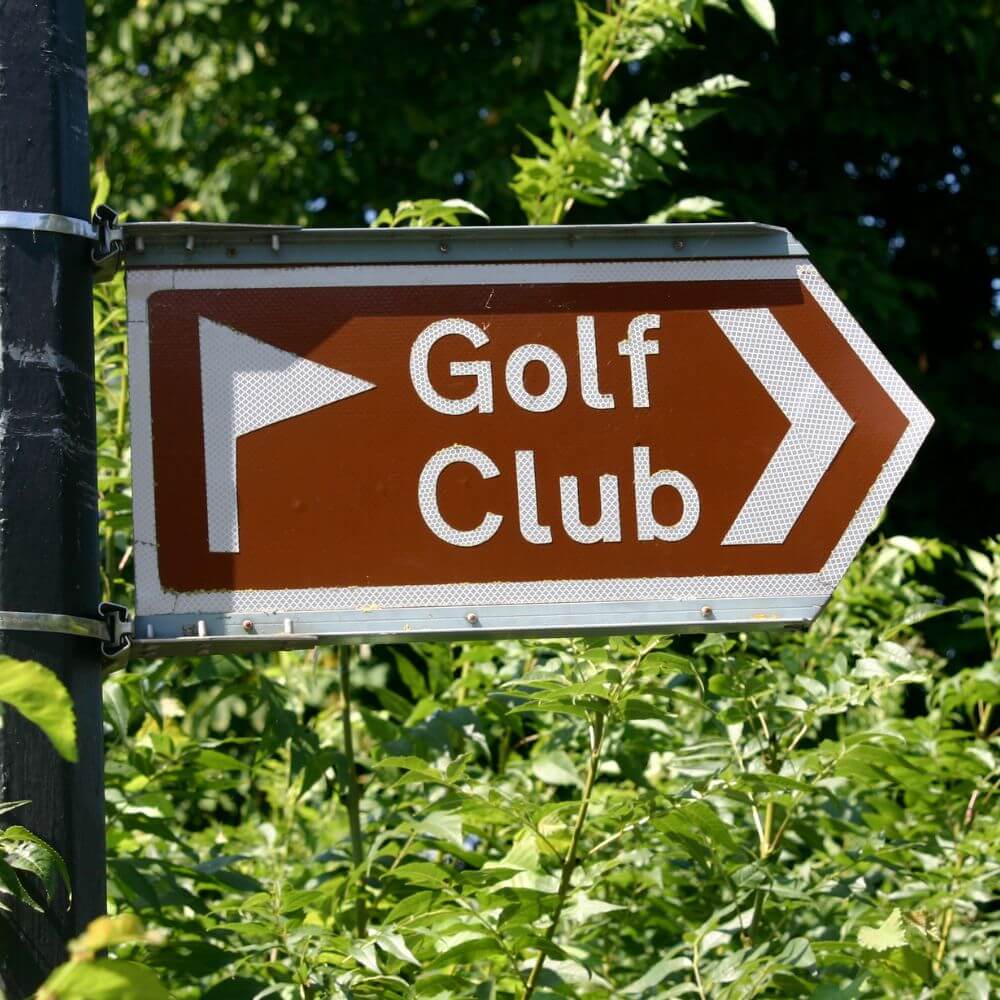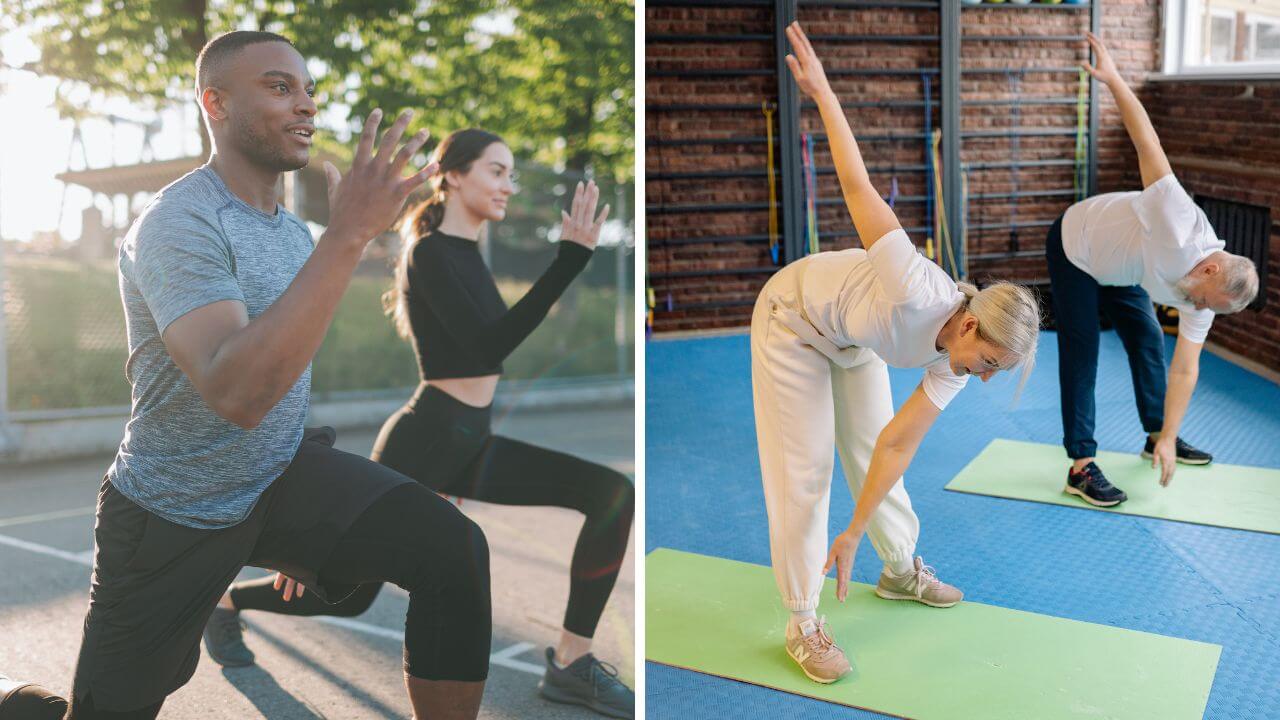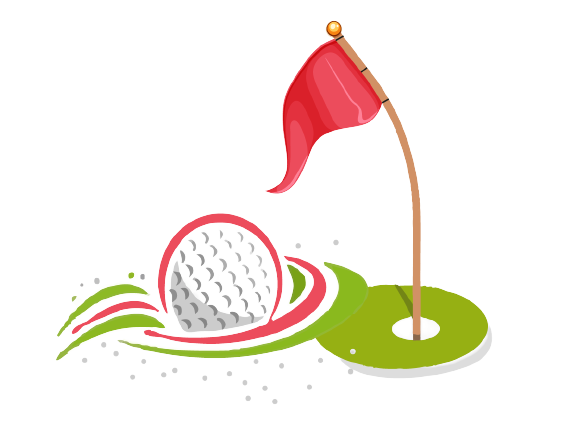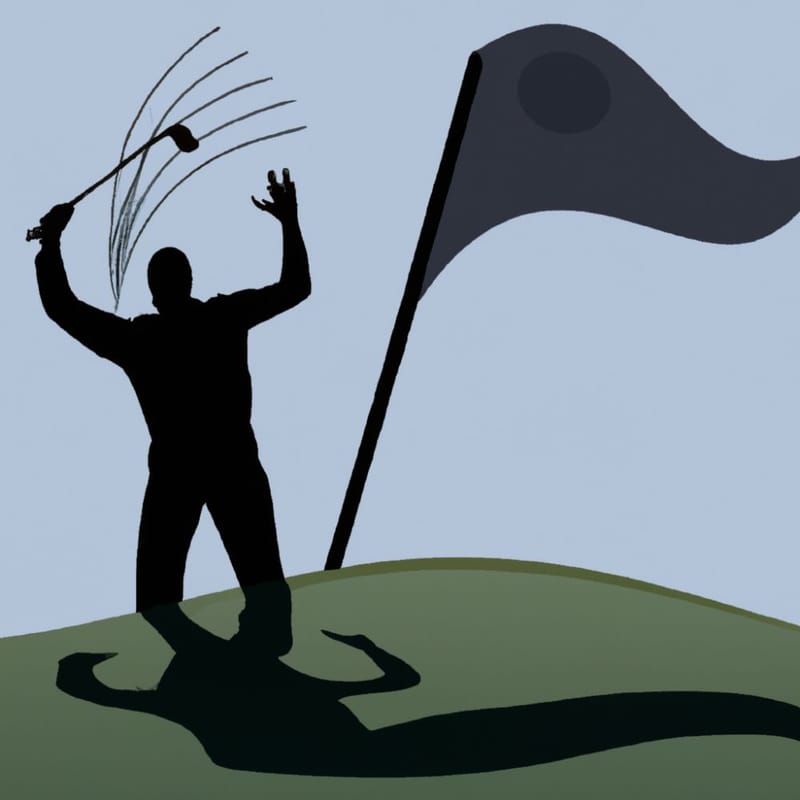Content Summary
Introduction
Why golf is a fantastic sport for everyone
Golf is more than just a fun hobby – it's a pretty amazing sport that brings together people of all ages, genders, and abilities. And is played all around the world.
What makes it so awesome is how it mixes physical skills, mental sharpness, and good ol' socializing, making sure everyone who plays has a great time.
I have played for years with two different foursomes I met on the golf course. People who love the same things always tend to gravitate towards each other.
The journey from beginner to pro golfer
Starting your golf adventure is seriously rewarding – you'll love the feeling of getting better and nailing that perfect shot. This article is here to help you out, guiding you from being a total newbie to a full-blown golf fan.
(There is so much to cover here that I was not able to provide all the detail I would have liked. I've left a list of previous articles at the bottom of this article covering subjects in more detail.)
The Basics: Understanding Golf Terminology
Golf lingo you need to know
To confidently navigate the world of golf, you'll need to familiarize yourself with its distinctive terms.
Terms like "par", "birdie," "bogey," and "eagle" may sound peculiar, but they are integral to understanding the game's scoring system and conversing with fellow players.
Decoding the golf course: fairways, greens, and hazards
Golf courses are like these amazing puzzles where nature and design come together, creating all sorts of challenges for golfers to figure out.
You've got fairways, greens, sand traps, and water hazards – all these elements make the course tricky and really put a golfer's skills to the test.
Taking time to learn how to maneuver through these tests of will and creativity is part of the fun experience of golf.
Essential Golf Equipment for Beginners
The perfect golf club set for newbies
First let's clarify the difference between men's and women's golf clubs. So, here's the deal: club shafts for men are usually stiffer and more rigid, made to flex when you swing faster.
On the other hand, women's club shafts are more flexible or "softer," which helps get a better launch off the club face and boosts club head speed, even with a slower swing. Seniors golf clubs are generally equal to women's clubs in shaft flex.
Selecting the ideal club set is paramount for beginners. Equip yourself with a driver, a few woods, a set of irons, a pitching wedge, a sand wedge, a putter and a golf bag. These are all the clubs and equipment that will enable you to tackle various situations and distances on the golf course.

Understanding how a golf ball gets into the air
Clubface loft: Each golf club has a specific loft, which is the angle of the clubface relative to the ground. This angle determines how high the ball will be launched.
Clubs with higher loft, such as wedges and short irons, will propel the ball at a steeper angle, whereas clubs with lower loft, like drivers and long irons, will result in a lower trajectory.
Angle of attack: The angle of attack refers to the angle at which the clubhead approaches the ball during the swing.
A positive angle of attack (hitting up on the ball) will help launch the ball higher, while a negative angle of attack (hitting down on the ball) can result in a lower trajectory.
The ideal angle of attack varies based on the club being used; for example, drivers require a more positive angle of attack, while irons necessitate a slightly negative angle to strike the ball effectively.
Physics of the golf swing: As the golfer swings the club, the clubhead gathers speed and generates force. When the clubhead makes contact with the golf ball, the ball compresses against the clubface before rebounding and launching into the air.
The combination of the clubface loft, angle of attack, and the force generated by the swing ultimately dictates the height, trajectory, and distance of the resulting shot.
Dress for success: golf attire and accessories
Golf attire is a delicate fusion of style and functionality. Dress codes vary, but a collared shirt, skorts (skirt with shorts), trousers or shorts, and golf shoes are standard.
Accessories such as gloves, hats, and sunglasses not only elevate your ensemble but also enhance your performance and comfort on the course.

Golf Etiquette: Don't Be That Golfer
Learning the rules of golf is an essential part of enjoying the game and becoming a better golfer.
Familiarizing yourself with the basic rules will help you navigate various situations on the golf course, avoid penalties, and maintain good sportsmanship.
The following is a brief overview of some fundamental golf rules:
- Play the ball as it lies: You must play the ball from where it comes to rest after a stroke, unless a specific rule allows you to move it. This includes playing from rough, sand, or other difficult positions. You cannot improve the lie or position of the ball.
- Teeing ground: You must start each hole by playing a stroke from within the teeing area. The teeing area is defined by the space between two tee markers and extends two club-lengths behind them.
- Hazards: There are two types of hazards on the golf course – bunkers (sand traps) and penalty areas (usually marked by red or yellow stakes or lines). When your ball is in a hazard, you cannot ground your club or touch the sand/ground before making a stroke. If you cannot play the ball out of the hazard, you may take relief under penalty of one stroke.
- Out of bounds: If your ball is hit beyond the course boundaries (usually marked by white stakes or lines), it is considered out of bounds. You must play another ball from the original spot under a penalty of one stroke.
- Unplayable ball: If your ball is in a position where it is impossible or impractical to play, you can declare it unplayable. You may take relief under a penalty of one stroke in accordance with the options provided by the rules.
- Lost ball: If you cannot find your ball within three minutes of searching, it is considered lost. You must play another ball from the original spot under a penalty of one stroke.
- Provisional ball: If you believe your ball might be lost or out of bounds, you may play a provisional ball to save time. If your original ball is found within the allotted time and is in play, you must continue with that ball. If the original ball is lost or out of bounds, the provisional ball becomes the ball in play under penalty of one stroke.
- Order of play: On the teeing ground, the player with the lowest score on the previous hole has the honor of playing first. Once everyone has teed off, the player whose ball is farthest from the hole typically plays first. However, to maintain a good pace of play, golfers often use a "ready golf" approach, where the first player ready to play can go ahead.
- On the green: When your ball is on the putting green, you may mark its position with a small marker, lift the ball, clean it, and replace it. You must not touch the line of your putt to gain an advantage. Players should take turns putting, with the one whose ball is closest to the hole going last.
- Etiquette and pace of play: Golf etiquette is an essential aspect of playing golf. This includes respecting fellow players, taking care of the course (e.g., repairing divots and ball marks), and maintaining a reasonable pace of play to avoid delays.
These are just a few of the basic rules of golf. To gain a comprehensive understanding of the rules, it is advisable to consult the official rulebook published by the United States Golf Association (USGA) and The R&A, or visit their websites for detailed explanations and resources.
Taking time to learn the rules will enhance your enjoyment of the game and contribute to a more enjoyable experience for all players on the course.

Pace of play: keeping up with the game
Maintaining an efficient pace of play is critical for an enjoyable round. Golfers should be prepared to play when it's their turn, walk briskly between shots, and keep an eye on the group ahead to avoid delays.
Mastering Your Golf Swing
The anatomy of a great golf swing
A great golf swing is an elegant fusion of power, precision, and balance. It begins with a smooth takeaway, progresses through a full rotation of the hips and shoulders, and culminates in a powerful yet controlled follow-through, launching the ball towards its intended target.
Key checkpoints for a flawless swing
A flawless swing hinges on several checkpoints, including a balanced setup, a controlled backswing, a steady head position, a proper weight shift, and a smooth release.
Consistent adherence to these fundamentals will result in improved accuracy and distance.
Grip It and Rip It: Holding Your Golf Club
Choosing the right grip style for you
The grip is the crucial connection between golfer and club. Opt for a style that feels comfortable and natural. There are 3 types of grips - the overlapping grip, the interlocking grip and the ten finger grip (also known as the baseball grip).
Common grip mistakes and how to avoid them
Common grip pitfalls include gripping too tightly, holding the club too far up or down, and aligning the hands improperly.
Address these issues by adopting a relaxed grip pressure, positioning the hands correctly, and ensuring the club rests in the base of the fingers rather than the palm.
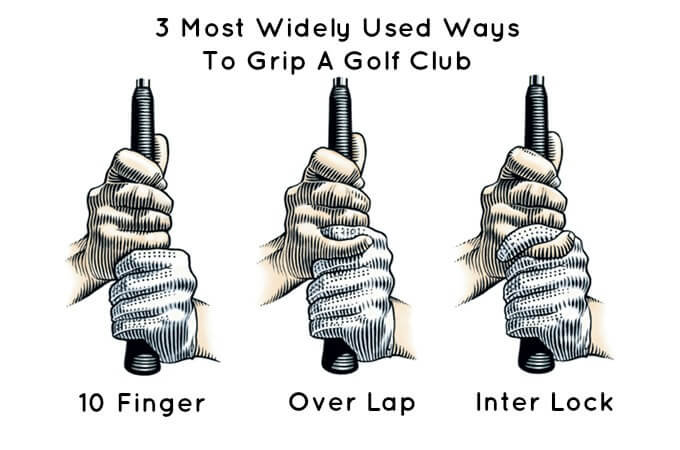
The Importance of Proper Stance and Alignment
Building a solid foundation: stance tips for success
An effective golf stance creates a stable foundation for the swing. Key components include feet shoulder-width apart, a slight bend in the knees, and a straight but relaxed posture. This balanced setup allows for optimal weight transfer and swing stability.
Aligning for accuracy: target your shots
Proper alignment is crucial for accurate shots. To enhance precision, align your feet, hips, and shoulders parallel to the target line, and position the ball appropriately in your stance depending on the club being used.
Golf Shot Techniques: Drive, Chip, and Putt
Teeing off: how to hit a powerful drive
A powerful drive starts with a wide stance, proper ball position, and a strong, coil-like backswing. Unleash your power by rotating your hips and shoulders while maintaining a steady head position and a smooth, accelerating swing through the ball.
Chipping away: mastering the art of the short game
Chip shots require finesse and touch. Keep your weight forward, use a narrow stance, and execute a short, controlled swing. Allow the club's loft to do the work, gently lifting the ball and landing it softly on the green.
Putting perfection: tips for sinking more putts
This is where you can really improve your golf scoring. Putting is both an art and a science.
Key elements include a square clubface, a pendulum-like stroke, and a steady tempo. Enhance your putting prowess by honing your ability to read greens and developing a consistent pre-shot routine.
Putting is where amateurs can compete with pros because it is the one area that does not require you to be a physical specimen to succeed. Make sure to purchase golf balls that best suit your putting ability.
Navigating the Golf Course: Strategy and Club Selection
Reading the course: understanding course layout
Understanding a golf course's layout is vital for crafting a successful strategy. Pay attention to hazards, elevation changes, and green contours. This knowledge will inform your club selection and shot execution.
Choosing the right club for every situation
Selecting the appropriate club is crucial for optimizing each shot. Factors to consider include distance, lie, wind, and personal shot tendencies. Developing a keen understanding of your clubs' capabilities will lead to more informed and effective decisions.
Overcoming Common Golf Challenges
Bunkers, water hazards, and roughs: conquering obstacles
Course designers delight in placing obstacles that test a golfer's skill and resolve. Bunkers, water hazards, and thick rough demand strategic thinking, precise execution, and a healthy dose of mental fortitude.
Dealing with weather conditions: wind, rain, and more
Mother Nature can be a formidable foe on the golf course. Coping with wind, rain, and extreme temperatures requires adaptability, adjustments to swing and club selection, and proper attire to maintain comfort and focus.
Mental Game: Boosting Your Confidence on the Course
Embracing a positive mindset for better performance
A positive mindset is the cornerstone of golf success. Cultivate a resilient attitude, celebrate your accomplishments, and approach each shot with confidence and optimism.
Bouncing back from a bad shot or round
Golf is a game of ups and downs. Overcoming setbacks is vital for continued progress. Learn from mistakes, maintain perspective, and trust in your abilities to rebound with renewed determination. Get past the bad golf shots and get excited about the next one.
Practice Makes Perfect: Drills and Exercises
Top drills for improving your swing
Dedicated practice is the key to golf improvement. Incorporate drills that target specific swing components, such as alignment, weight transfer, and tempo. Consistent repetition will ingrain these skills, translating to better performance on the course.
Fun exercises to enhance your golf skills
Infuse your practice sessions with enjoyable exercises that challenge your creativity and shot-making abilities. Invent games, simulate on-course situations, and engage in friendly competition with fellow golfers to keep the learning process fresh and engaging.
The Power of a Golf Lesson: Finding the Right Instructor
The benefits of professional guidance
Investing in professional guidance can accelerate your golf development. Expert instructors possess invaluable insights, can identify and rectify swing flaws, and provide personalized advice tailored to your unique abilities and goals.
This is an investment I decided to make in myself so I could better enjoy the game muck quicker. It has paid dividends over the years and I continue to get tune-ups periodically.
Tips for selecting the perfect golf coach
When seeking a golf coach, prioritize experience, teaching style, and compatibility. Attend a few trial lessons, read reviews, and seek recommendations from fellow golfers to find the instructor who best aligns with your personality and objectives.
Don't be afraid to tell the instructor if you are not a match with them. They will understand and may even recommend another coach for you.
Joining a Golf Club: A Home for Your Golf Journey
The perks of membership: networking, facilities, and more
Golf club membership offers a myriad of advantages, from access to pristine courses and state-of-the-art practice facilities to opportunities for socializing and networking with fellow golf enthusiasts.
Finding the right golf club for you
Selecting the ideal golf club depends on factors such as location, membership fees, amenities, and the overall atmosphere. Tour various clubs, assess their offerings, and choose the one that resonates with your preferences and lifestyle.
Golf Fitness: Get in Shape for the Game
Exercises to improve your golf-specific strength and flexibility
A well-rounded golf fitness regimen should target strength, flexibility, and balance. Incorporate exercises such as core rotations, lunges, and yoga poses to enhance your golf performance and reduce the risk of injury.
The impact of fitness on your golf performance
Improved fitness can yield significant benefits on the golf course. A stronger, more flexible body translates to increased swing speed, greater stamina, and enhanced overall performance.
I have a daily fitness routine I have used for years. It helps to minimize any injuries and allows me to enjoy the game even more since I don't finish the day all stiff and sore.
I've included a workout routine below that may be of great use to you. You don't have to do them all. Just choose the ones that fit your particular needs.
Nutrition and Hydration: Fueling Your Golf Game
Best foods and drinks for golfers
Optimal golf performance requires proper nutrition. Focus on consuming a balanced diet of lean proteins, complex carbohydrates, and healthy fats. Hydration is equally important, so ensure you drink plenty of water before, during, and after your round.
Staying energized and hydrated on the course
Maintain energy levels and stave off dehydration by consuming nutrient-dense snacks and electrolyte-rich beverages during your round. Items such as fruit, nuts, and sports drinks can provide a much-needed boost to sustain peak performance.
Traveling with Golf: Amazing Golf Destinations
Top golf resorts and courses around the world
The world is replete with breathtaking golf destinations, from the legendary links of Scotland to the sun-soaked fairways of Hawaii. Exploring these iconic locales can elevate your golf experience and create lasting memories.
I have had the opportunity to play the iconic Pebble Beach Golf Links and courses across the US, Mexico and Puerto Rico. These are memories that will last with me for the rest of my life. Don't wait for the right time because the right time may never come. Just make a decision to do it and then do it.
Tips for planning your dream golf vacation
When planning a golf vacation, consider factors such as climate, course variety, accommodation options, and local attractions.
Research your destination, book tee times in advance, and pack appropriate attire and equipment to ensure a seamless and unforgettable golf getaway. A really good travel agent can make this process so much much easier.
Conclusion
Hopefully, our comprehensive guide has equipped you with the knowledge and tools to embark on a successful golf journey. From mastering swing fundamentals and golf etiquette to embracing fitness and exploring the world of golf travel, the path to golf success is now within your grasp.
With determination, practice, and a passion for the game, your transformation into a golf player is inevitable. Embrace the challenges, celebrate the victories, and cherish the camaraderie that golf provides. Swing into fun and welcome to the wonderful world of golf!
Thank you for visiting, and we hope to see you back soon!

